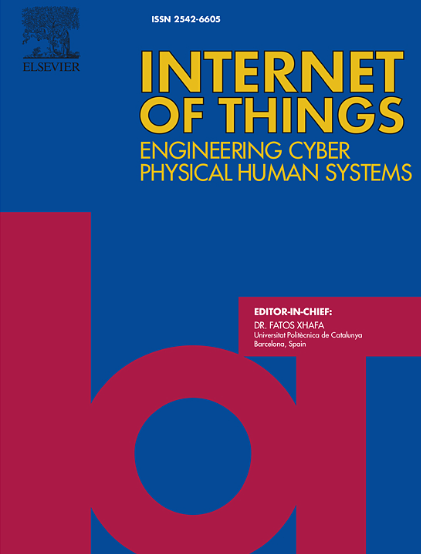智能系统:理论、应用和最新进展综述
IF 6
3区 计算机科学
Q1 COMPUTER SCIENCE, INFORMATION SYSTEMS
引用次数: 0
摘要
快速的技术进步已经渗透到许多专业领域,改变了平凡的任务和复杂的操作,在智慧城市、医疗保健和各种行业都有明显的例子。因此,可以观察到有关智能系统的文献的显著激增,以及此类系统的实用实现的兴起。在这篇全面的调查论文中,我们将累积智能系统架构分解为五个基本组成部分,即:控制、感知、知识、通信和安全。受认知动力学理论基础概念的启发,对每个组件进行了详细的讨论和分类,详细介绍了必要的概念和功能。此外,我们还讨论了有关这些组件和智能系统最具影响力的应用的最新技术。由此,可以确定智能系统文献中的差距,并提出未来的工作来纠正已发表方法中的缺点。因此,这项工作对那些从学术角度研究智能系统的人来说是最重要的,目的是研究智能系统的分类和最现代的方法。除了进一步定义智能系统框架外,我们的分析还得出结论,在推进智能系统应用方面,研究最多、最重要的部分是知识和安全。首先,这是出于对大规模系统中安全、自适应和强大的数据驱动自治的渴望。我们得出的结论是,区块链、物联网和机器学习协议和技术正在不断发展,这对智能系统的发展至关重要。本文章由计算机程序翻译,如有差异,请以英文原文为准。
Smart systems: A review of theory, applications, and recent advances
Rapid technological advancements have permeated numerous professional fields, transforming mundane tasks and complex operations alike, with examples evident in smart cities, healthcare, and various industries. As a result, a significant surge in the literature concerning smart systems is observed, as is the rise of pragmatic implementations of such systems. In this comprehensive survey paper, we decompose the cumulative smart system architecture into five fundamental components, namely: control, perception, knowledge, communication, and security. Inspired by the underlying notions of cognitive dynamics theory, each component is discussed in detail and categorized, thoroughly detailing necessary concepts and functionality. To add, we discuss the state of the art with respect to each of these components and the most impactful applications of smart systems. From this, gaps in smart systems literature can be identified, where future work is proposed to rectify shortcomings in published methods. This work therefore has foremost utility to those investigating smart systems from an academic standpoint, with the goal of examining the smart system taxonomy and the most modern methods. In addition to further defining the smart system framework, our analysis concluded that the most increasingly researched, and most important components in advancing smart systems applications are knowledge and security. Primarily, this is motivated by aspirations towards safe, adaptive, and robust data-driven autonomy in large scale systems. We conclude that blockchain, IoT, and machine learning protocols and technologies are continuously developing topics that will be essential in smart system advancement.
求助全文
通过发布文献求助,成功后即可免费获取论文全文。
去求助
来源期刊

Internet of Things
Multiple-
CiteScore
3.60
自引率
5.10%
发文量
115
审稿时长
37 days
期刊介绍:
Internet of Things; Engineering Cyber Physical Human Systems is a comprehensive journal encouraging cross collaboration between researchers, engineers and practitioners in the field of IoT & Cyber Physical Human Systems. The journal offers a unique platform to exchange scientific information on the entire breadth of technology, science, and societal applications of the IoT.
The journal will place a high priority on timely publication, and provide a home for high quality.
Furthermore, IOT is interested in publishing topical Special Issues on any aspect of IOT.
 求助内容:
求助内容: 应助结果提醒方式:
应助结果提醒方式:


